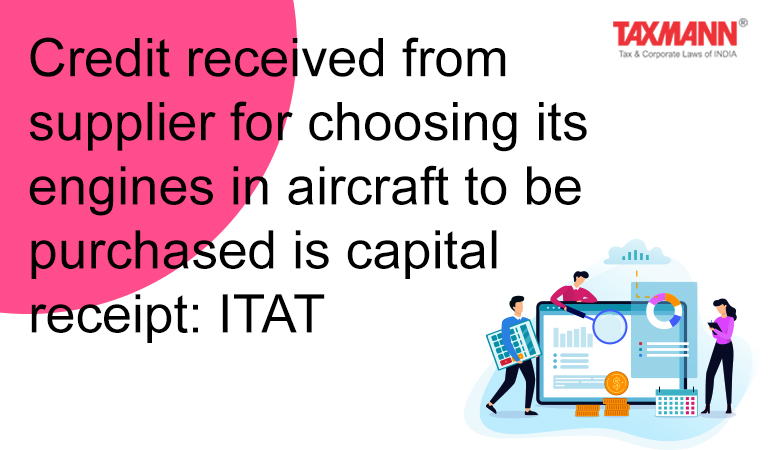Credit received from supplier for choosing its engines in aircraft to be purchased is capital receipt: ITAT
- Blog|News|Income Tax|
- 2 Min Read
- By Taxmann
- |
- Last Updated on 12 October, 2021
Case Details: InterGlobe Aviation Limited (IndiGo) v. ACIT - [2021] 131 taxmann.com 98 (Delhi - Trib.) (SB)
Judiciary and Counsel Details
-
- G.S. Pannu, Vice President, P.P. Bhatt, President and R.K. Panda, Accountant Member
- M.S. Syali, Sr. Adv. Tarandeep Singh, CA and Pulkit Verma, Adv. for the Appellant.
- G.C. Srivastava, Mayank Patawari, CA and Suvinay Dash, Adv. for the Respondent.
Facts of the Case
The assessee was a Company engaged in the business of operating low cost Airlines in India under the Name and Brand “IndiGo”. During the course of assessment proceedings, it was observed that the assessee had entered into a Purchase Agreement with AIRBUS SAS, France, for the supply of 100 Aircrafts. The assessee had selected V2500 engines manufactured by IAE international aero engines AG, Switzerland (IAE) as the supplier of engines that were to be fitted in the Aircraft.
As a consideration for the selection of the IAE engines to be fitted in the aircraft, certain credits were allowable to the assessee from IAE on the delivery of such aircraft. As per assessee, since the credit was given by IAE was linked to the aircraft’s acquisition, the amount being capital receipt is not liable to tax. However, Assessing Officer (AO) treated the same as revenue receipt.
The Hon’ble President vide Order Dated 19.04.2018 had constituted the Special Bench for deciding the issues referred to by the Delhi “C” Bench.
ITAT Held
The Delhi Tribunal Special Bench held that it is the settled proposition of law that under the provisions of the Act, all receipts are not taxable. Whether a particular receipt is an income or not depends on the nature/purpose of that receipt and the true scope and effect of the relevant taxing provisions.
The assessee received credits for the selection of engines for support for aircraft acquisition. Said credits would not be incidental to or derived from the business of operation of commercial aircraft.
Aircrafts were part of fixed capital for the assessee. Thus the entire amount of credit received by the assessee in year under consideration was a capital receipt, not a revenue receipt.
Disclaimer: The content/information published on the website is only for general information of the user and shall not be construed as legal advice. While the Taxmann has exercised reasonable efforts to ensure the veracity of information/content published, Taxmann shall be under no liability in any manner whatsoever for incorrect information, if any.

Taxmann Publications has a dedicated in-house Research & Editorial Team. This team consists of a team of Chartered Accountants, Company Secretaries, and Lawyers. This team works under the guidance and supervision of editor-in-chief Mr Rakesh Bhargava.
The Research and Editorial Team is responsible for developing reliable and accurate content for the readers. The team follows the six-sigma approach to achieve the benchmark of zero error in its publications and research platforms. The team ensures that the following publication guidelines are thoroughly followed while developing the content:
- The statutory material is obtained only from the authorized and reliable sources
- All the latest developments in the judicial and legislative fields are covered
- Prepare the analytical write-ups on current, controversial, and important issues to help the readers to understand the concept and its implications
- Every content published by Taxmann is complete, accurate and lucid
- All evidence-based statements are supported with proper reference to Section, Circular No., Notification No. or citations
- The golden rules of grammar, style and consistency are thoroughly followed
- Font and size that’s easy to read and remain consistent across all imprint and digital publications are applied








 CA | CS | CMA
CA | CS | CMA


